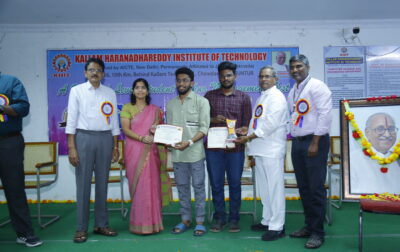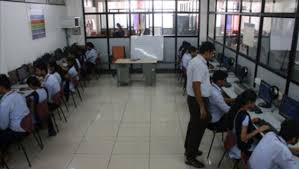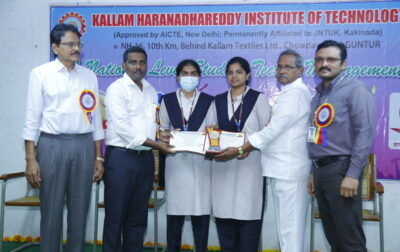
Virtual Labs
- Virtual Labs – Improved laboratory experience
- Goal:
- The Virtual labs initiative is a paradigm shift in ICT-based education.
- To provide remote access to simulation-based Labs.
- To enthuse students to conduct experiments by arousing their curiosity. This would help them in learning basic and advanced concepts through remote experimentation.
- Context: Good lab facilities and updated lab experiments are critical for any engineering discipline. The paucity of lab facilities often makes it difficult to conduct experiments. Further lab experiments in the curriculum are often restricted by the availability of lab infrastructure.
- Step 1: The labs and experiments offered on the Virtual labs’ platform are mapped with the labs and exercises prescribed in the curriculum. After due discussions, the department announces the information to the students about the labs and exercises in the remote mode.
- Step 2: Mentors are appointed for each Lab.
- Step 3: A workshop in association with Virtual labs is organized to sensitize the students and faculty members on how to navigate the platform.
- Step 4: Students navigate through the platform and access the lab. The students are informed to go through the relevant video content and lab manual in remote mode.
- Step 5: Student will perform the simulation experiment in the remote mode and submit the feedback form to the mentor.
- The lab experiments are limited to simulation-based ones.
- Some of the lab experiments are not available.
- Computer systems with the latest configuration and better connectivity.
The Virtual Labs project addresses the above issues of lack of good lab facilities, as well as trained teachers, by providing remote access to simulation-based Labs in various disciplines of science and engineering.
Remote access to simulation-based labs arouses the curiosity of the students and permits them to learn at their own pace. This student-centric approach facilitates the absorption of basic and advanced concepts through simulation-based experimentation. Internet-based experimentation further permits the use of additional web resources, video lectures, animated demonstrations and self-evaluation. Specifically, the Virtual Labs complements the lab facilities already available. Virtual labs are any place, any pace, anytime, any-type labs. It is a paradigm shift in student-centric, online education used to its best during the current pandemic.
Practice:
The laboratory sessions are conducted by the concerned mentor who supplements the same by engaging the discussion sessions.
Evidence of Success
Table : Evidence of success
| S. No | AY | Course | No. of Students | No. of Experiments | Remarks |
|---|---|---|---|---|---|
| 1 | 2024-25 | Electrical Simulation Lab | 106 | 2 | Simulation of Time response analysis |
| Power Systems & Simulation Lab | 2 | Simulation of Gauss-sidel method, Newton Raphson’s method | |||
| 2 | 2023-24 | Electrical Simulation Lab | 104 | 2 | Simulation of Time response analysis |
| Power Systems & Simulation Lab | 2 | Simulation of Gauss-sidel method, Newton Raphson’s method | |||
| 3 | 2022-23 | Electrical Simulation Lab | 100 | 2 | Simulation of Time response analysis |
| Power Systems & Simulation Lab | 2 | Simulation of Gauss-sidel method, Newton Raphson’s method |
KHIT is the nodal center for Virtual labs.
The lab sessions are completed during the A.Y 2022-23 and 2023-24 successfully.
Problems:
Resources:
Our Vision
To empower students of Computer Science and Engineering Department to be technologically adopt, innovative, global citizens possessing human value.
Our Mission
Encourage students to become self-motivated and problem solving individuals. Prepare students for professional career with academic excellence and leadership skills.
Department Electrical & Electronic Engineering
"Center For Excellence"
Students In-take
Students Placed
Faculty Strength

At a Glance
The Electrical & Electronic Engineering (EEE) department is established in 2009, offers Undergraduate program (B. Tech.) in Computer Science and Engineering with an initial intake of 60 seats (during Academic year 2009-10), an additional intake of 60 (120 seats during the Academic year 2010-11) and another additional intake of 60 (180 seats during the Academic year 2020-2021). This department has truly become the center for learning with its excellent infrastructure and other facilities.
Resources & Infra.
A State-of-the-Art Data center with advanced servers provides highly interactive learning environment with full fledged hardware and software training facilites. DataCenter is equipped with Ten Xeon Processor based Servers and 2 Pentium Processor Based servers and all 900+ Nodes organized in Client/Server architecture with AT & T structured cabling (both OFC and UTP) compliance.


Faculty Profiles
The Programmes in Continuing Education helps people who are preparing for a career change or entrance into professional school, or those pursuing advanced training in their fields.
Mou's
To strengthen interaction with industries and to keep our students updated with the latest trends in Computer Science & Engineering, the Department has entered into an agreement with the following companies.


Department Events
To strengthen interaction with industries and to keep our students updated with the latest trends in Computer Science & Engineering, the Department has entered into an agreement with the following companies.
